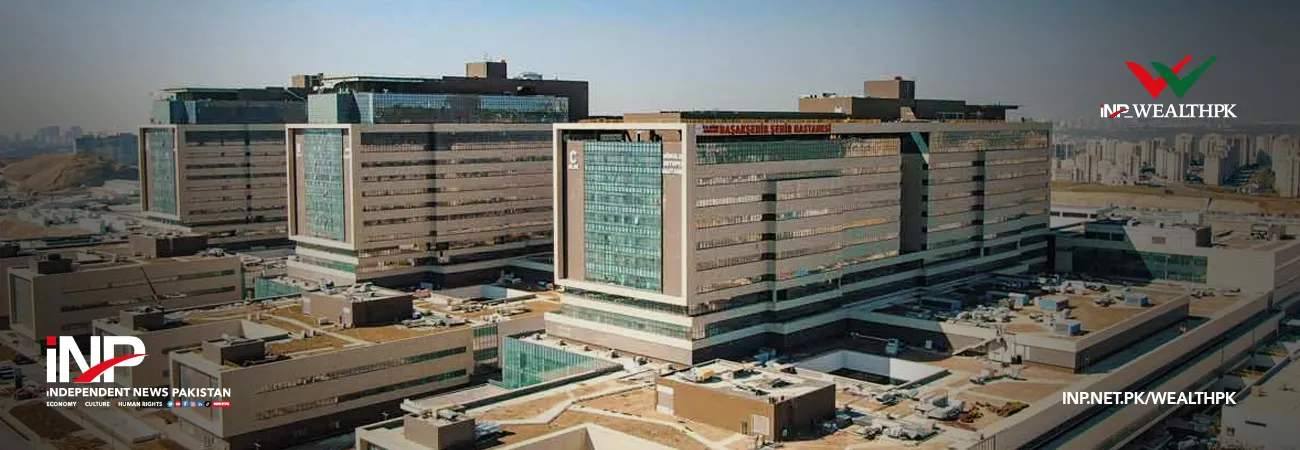INP-WealthPk
By Muhammad Soban ISLAMABAD, Feb 01, (INP-WealthPK): Hotel industry is a vital part of the services sector in Pakistan and constitutes the backbone of the tourism sector. This sector, which is one of the major sources of employment and handsome foreign exchange, has suffered many ups and downs in the last twenty years. This thriving and booming sector employing 1.5 million people (2.7% of total labour force) suffered the first major blow when the World Trade Centre [WTC] in the US financial district of Lower Manhattan came crashing down in September 11, 2001 terrorist attacks. This tumultuous event that marked a watershed in the human history inflicted losses of $126 billion on the Pakistani economy. The hospitality industry, of which hotel industry is an important part, suffered the worst like so many other sectors. The military operations launched against terrorists in the tribal areas of Pakistan in the wake of the war on terrorism exacerbated losses in this sector, as apart from foreign tourists, local tourists also stopped visiting the tourist attractions. As a result, hotels, motels and restaurants started closing down one after the other, leading to massive layoffs. Pakistan's economy limbed back to stability after 2011, leading to an encouraging growth in the hotel industry, as the number of local and foreign visitors increased, raising demand for more hotels in the most sought-after tourist attractions. As the hotel industry buoyed up, generating hundreds of thousands of jobs and contributing a handsome revenue to the GDP, the outbreak of COVID-19 pandemic brought the industry to a complete standstill in 2020 due to the pandemic related travel restrictions, which again led to massive retrenchments and layoffs. In order to get to grips with the gigantic problem of joblessness and to save hundreds of thousands of people from hunger and starvation, the government introduced a smart lockdown strategy and opened some sectors such as the construction sector, enabling scores of people to make their ends meet with dignity and honour. The government paid special attention to the implementation of COVID-19-specific standard operating procedures (SPOs) and massive vaccination of people of all ages and groups. It was due to these measures at the state level that death toll and the pandemic incidence began to drop. The government’s strategy finally resulted in the gradual opening of many more sectors. The hotel industry particularly benefitted from this situation, leading to massive improvement. Before the pandemic, according to the Board of Investment (BOI), the hotel and tourism industry was growing 4 percent annually and 6 percent growth was projected in the next five years. According to the Managing Director of Pakistan Tourism Development Corporation (PTDC) Aftab-ur-Rehman Rana, in 2019 the total contribution of the tourism sector to the GDP was 5.7 percent. "More destinations are being identified and developed; historic and religious places are being refurbished and preserved; roads and motorways to tourist destinations are being built; and new hotels and accommodations are being set up," he said, adding that the country was also providing online visa services to foreign tourists. According to the spokesperson for Culture, Sports, Tourism, Archaeology and Youth Affairs Department of Khyber Pakhtunkhwa Latif-ur-Rehman, last year the tourism industry suffered, as most of the tourist places were padlocked due to the corona related fears and restrictions. Rehman said the KP tourism industry suffered losses of more than PKR10 billion due to the pandemic. Rehman said there was an overwhelming rush of tourists in the Northern Areas and KP province after some relaxation in the restrictions, leading to a shortage of accommodation. He said both the regions [KP and Northern Areas] were major tourist destinations between May and October in the current year. He said business activities worth over PRK65 billion were generated in the KP province alone between May and July. The increased rush of tourists has created lots of jobs for the people of these areas. Over three million tourists made a beeline for the tourist spots in Naran, Kaghan, Kalam, Swat and Chitral during the recent Eidul Adha holidays, he added. The credit for increased tourist inflow and boom in the hotel industry also goes to the multibillion-dollar China-Pakistan Economic Corridor (CPEC) under which the dilapidated road infrastructure has been replaced with a state-of-the-art network that has reduced travel time, fueled consumption and ensured safe and secure traveling. The world standard road network has led to an increase in the number of hotels, restaurants and motels. The Karakoram Highway (KKH) Phase-II project [Havelian to Thakot] under the CPEC has contributed immensely towards increasing the tourist rush to the idyllic tourism spots of Khyber Pakhtunkhwa and the Northern Areas. The CPEC – serving as a monument to the Pak-China friendship – has come as a blessing for all the sectors of Pakistan’s economy. It has opened new avenues for hotel and tourism industry. The world standard road work has also thrown open massive investment opportunities for local and foreign investment in the hotel industry worth $20 billion.













